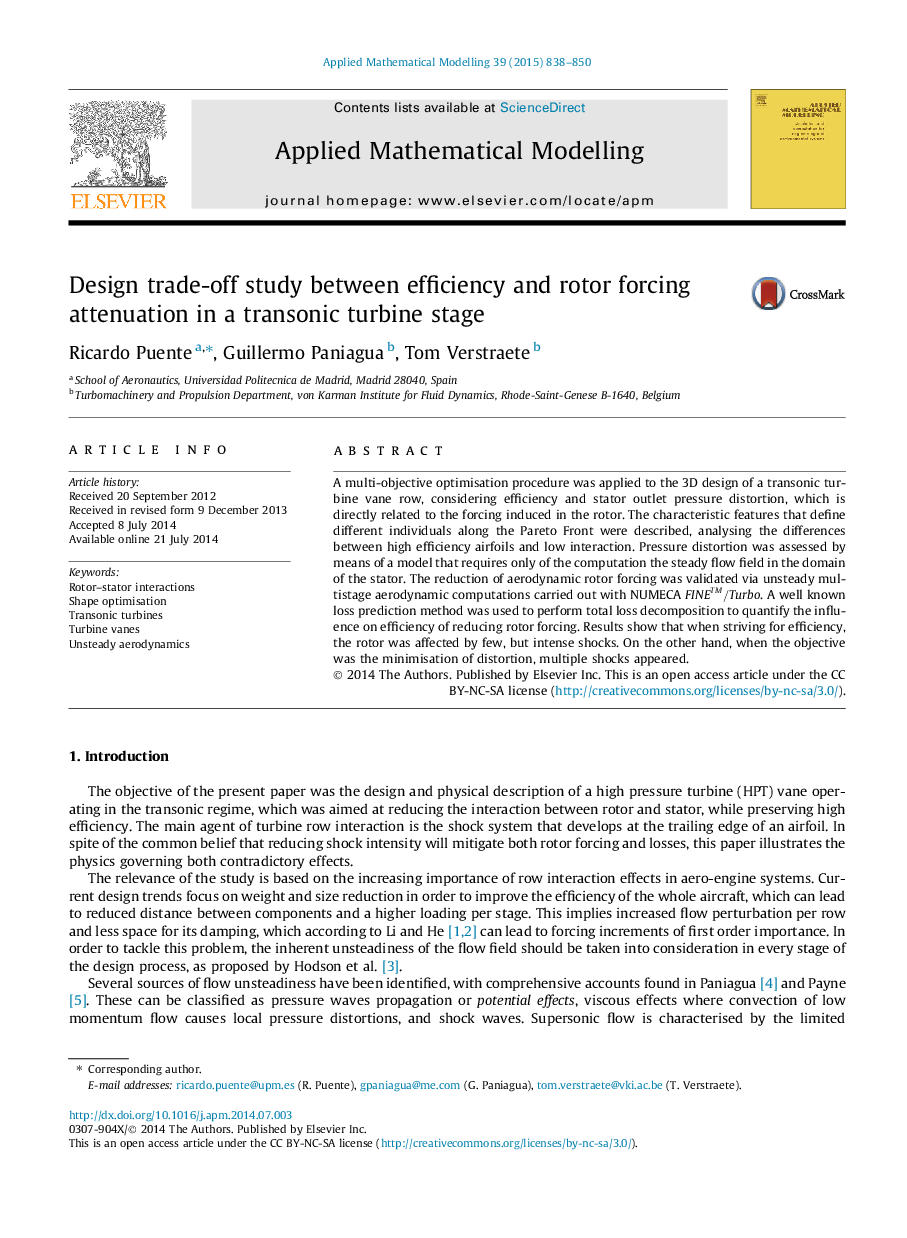| Article ID | Journal | Published Year | Pages | File Type |
|---|---|---|---|---|
| 10677742 | Applied Mathematical Modelling | 2015 | 13 Pages |
Abstract
A multi-objective optimisation procedure was applied to the 3D design of a transonic turbine vane row, considering efficiency and stator outlet pressure distortion, which is directly related to the forcing induced in the rotor. The characteristic features that define different individuals along the Pareto Front were described, analysing the differences between high efficiency airfoils and low interaction. Pressure distortion was assessed by means of a model that requires only of the computation the steady flow field in the domain of the stator. The reduction of aerodynamic rotor forcing was validated via unsteady multistage aerodynamic computations carried out with NUMECA FINETM/Turbo. A well known loss prediction method was used to perform total loss decomposition to quantify the influence on efficiency of reducing rotor forcing. Results show that when striving for efficiency, the rotor was affected by few, but intense shocks. On the other hand, when the objective was the minimisation of distortion, multiple shocks appeared.
Related Topics
Physical Sciences and Engineering
Engineering
Computational Mechanics
Authors
Ricardo Puente, Guillermo Paniagua, Tom Verstraete,
